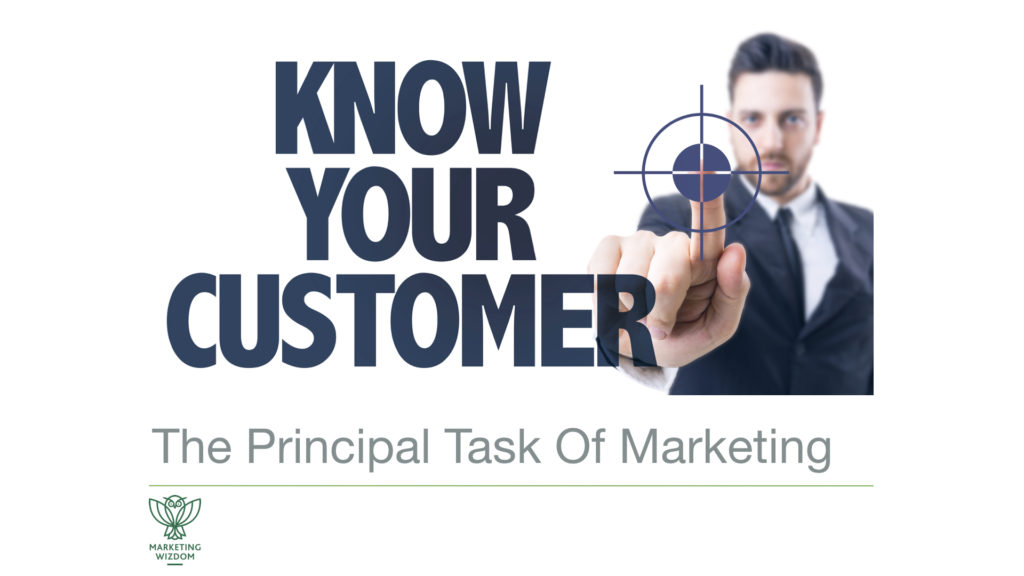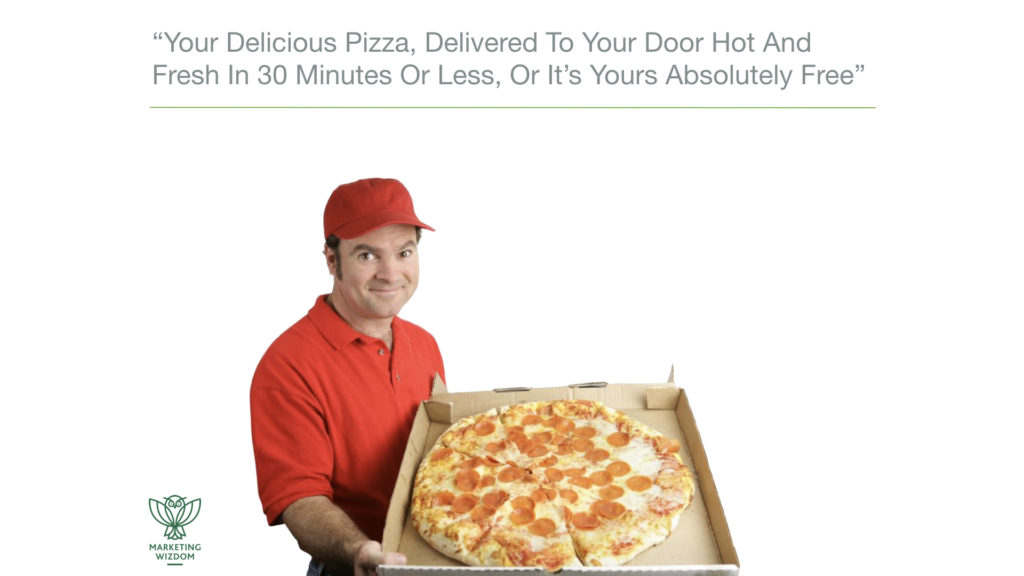Determining and addressing the real needs of your marketplace is a key component in outselling, outsmarting and outperforming your toughest competition, writes Robert Clay of Marketing Wizdom.
If you don’t know me, I specialise in helping entrepreneurs turn any good business into a great business. While also turning any great business into one of the leaders in its niche. And that’s why I’m often known as a business transformer.
Ultimately, my mission is to demystify marketing for you and give you insights into a series of low-risk/high-return marketing strategies. Ones that deliver your vision and the outcomes you’re seeking. And to do so more rapidly, and with less pain, so that you don’t have to figure out all the answers for yourself.
The Curse of Assumption
The most careless approach you can take to growing a business is to decide FOR your customers what they want and need.
Here’s a question for you: How can you know your customers’ real needs if you don’t talk to them about it? Yet most businesses don’t do that, and end up working blind, when they don’t have to!
Assumptions are dangerous because they’re nearly always WRONG.
Not knowing the real needs of your marketplace can cause lost sales and missed opportunities. And it can hurt you to the core when you realise just how much business you’re missing.
So let’s go right back to basics. John McKitterick, former CEO of General Electric said:
“The principal task of marketing is not so much to be skilful in making the customer do what suits the interest of the business. But it is to be skilful in conceiving and then making the business do what suits the interests of the customer.”
What Makes Advertising Work
John McKitterick was absolutely right. So was the late Eugene Schwartz, one of the world’s most successful copywriters, when he wrote:
“The power, the force, the overwhelming urge to own that makes advertising work, comes from the market itself. It does not come from the copy. Copy cannot create desire for a product. It can only take the hopes, dreams, fears and desires that already exist in the hearts and minds of millions of people, and focus those already existing desires onto a particular product. This is the copy writer’s task: not to create this mass desire—but to channel and direct it.
Actually, it would be impossible for any one advertiser to spend enough money to actually create this mass desire. He can only exploit it. And he dies when he tries to run against it.”
You discover those hopes, dreams, fears and desires by conducting research. Do this right and you’ll discover the real needs of your marketplace. You’ll also enter a world that enlightens you. one that aligns everything you do with the real needs and desires of your customers and prospective customers.
It can make a huge difference to your business.
How to Discover Your Customers’ Real Needs
The point is simple. Your customers and prospects are the ultimate judges of everything you do. At its simplest level you just have to directly ask your customers, prospective customers and people who buy comparable products or services from your competitors. In fact you owe it to them, and you owe it to yourself.
Surveys are easy to perform. You can do them the traditional way by phoning, visiting or sending out questionnaires. Or you can mix with customers on your own premises or get a mystery shopper to do this for you. Alternatively, you can hold focus groups, do the research yourselves, or someone else can do the research. Or you can ask people to respond to an easy-to-set-up online survey and start getting valuable insights in a matter of minutes.
If you tell them that you’re trying to refocus your business and want to better understand their buying decisions so that you can better provide for their true needs and real desires, you’re likely to get a good response.
Ask in easy non-threatening terms, people are usually only too willing to tell you how you can serve them better. You’ll gain their respect, because few other companies ever do this, and you’ll get some extraordinarily revealing answers that’ll be invaluable for you in your marketing.
Discover Real Needs By Asking These Questions
There are two sets of questions you could ask: questions for existing clients and questions for prospects.
Your questions should help you to focus more accurately on the key issues behind their buying decisions and their true needs. Here are a few examples of the types of question you should ask.
- The biggest needs that your business fills for them
- The reason or reasons why they do or don’t do business with you or your competitor
- Why they do or don’t buy your product or service
- What’s important or unimportant to them about your product or service
- How your product benefits your customer or how it’s used and applied
- What they most like or dislike about your product, service or company
- What first stimulated them to start using your product or service
- If they ran your company, what would they change and why
- And what else can you do to help them
These are simple questions, but most people in business never ask them. The answers will help you to understand, identify and most importantly determine and address the real needs of your customers and prospects.
Dominos: How Asking the Right Questions Launched a Company Into the Big Time
Here’s a classic example of discovering customers’ real needs. Dominos Pizzas was founded by Tom Monaghan. He had one simple aim: to be the No.1 Pizza company in Detroit within 10 years.
He assumed that people wanted the best pizza; or they wanted the cheapest pizza; or they wanted the biggest range of toppings. These assumptions made no difference to his sales.
After 10 years going nowhere, Tom Monaghan started interviewing his clients to discover their real needs. He soon discovered that virtually every customer was hungry for a delivery service. He also found that they wanted their pizzas freshly made, not re-heated. They weren’t prepared to wait longer than 30 minutes. And they were sick of promotional gimmicks and false promises.
From that research Tom Monaghan developed a powerful USP:
“Your delicious pizza — delivered to your door hot and fresh in thirty minutes or less — or it’s yours absolutely free”
Few companies at that time delivered pizza, and nobody was delivering pizza in 30 minutes. So his USP expressed exactly what his customers and prospective customers wanted.
The impact of discovering his customers’ real needs was astonishing. Within 5 years Domino’s went from No 18 in Detroit, to No 2 worldwide.
As a result of discovering customers’ real needs, Dominos now have nearly 9,000 stores in over 60 countries. And in 1998, Tom Monaghan sold a controlling interest to a private equity company for over US$1 billion.
Get Ready to Take Off
Everything changes the moment you understand the real needs and desires of your customers. And you should incorporate that awareness into every form of communication you engage in:
- advertising
- sales letters
- literature
- website
- social media interactions
- whenever you engage with people, and
- in everything you or your team do or say
This will make you so much more effective. You’ll be more persuasive and better connected because you’re speaking the language your prospects want to hear. And it’ll multiply the results of everything you do.
If you’ll only do that, you’ll outsell, outsmart and outperform your toughest competition. And you’ll watch your business expand. That’s because you’ll be totally in alignment with what your customers are looking for. And don’t be at all surprised if a lot of your competitor’s customers start flocking to you as a result.
OK, so that was the third instalment from my new online seminar “10 ways to Outsell, Outsmart and Outperform Your Toughest Competition.”
Questions
Let me ask you this: how much difference would it make to your business if you could understood exactly what your customers and prospects real needs are, instead of making assumptions?
Start by answering these questions:
- Identify what questions you need to ask to understand the hopes, dreams, fears and desires of your customers and prospects
- In what ways could you ask your prospects and customers to answer those questions?
- How will you use the answers to give you a competitive edge?
Please share your thoughts and add your questions to the comments below. I’ll try to provide as many answers as possible in my future online videos, seminars, workshops, masterclasses and blog posts.
And if you enjoyed this post you may enjoy these posts as well.
HOW TO UNLOCK YOUR TRUE BUSINESS POTENTIAL
We’ve learned from scaling multiple businesses that there’s a proven formula for success that can cut your learning curve by 80%, put you 5-10 years ahead of your peers and put you on the path to 628% growth in 12 months or less. Here are two FREE ways to unlock your true business potential.1. CLICK HERE TO JOIN OUR FREE ONLINE COMMUNITY, THE “628% GROWTH CLUB,” and see how easily you can apply this powerful formula using real world examples from multiple businesses that have achieved this kind of growth and more. When you join you get a FREE copy of Robert Clay’s new book ”THE 628% GROWTH FORMULA … a proven system for getting big results fast.” We even offer free one2one strategy sessions!
2. CLICK HERE TO JOIN OUR FREE WEEKLY 628% GROWTH ROUND TABLE. This free weekly live round table teaches you how to accelerate your business growth in just 45 minutes a week. It is dedicated to unlocking your true potential with discussion topics that include actionable strategies for accelerating your business growth and helpful tips for achieving this goal. N.B. Availability is limited each week.
 For 25 years Robert Clay has helped hundreds of ambitious entrepreneurs to unlock their true business potential; cut their learning curve by 80%; put them 5-10 years ahead of their peers; and achieve 628% growth in 12 months or less. MEET ROBERT in this video and learn more about his journey from automotive innovator to business transformer.
For 25 years Robert Clay has helped hundreds of ambitious entrepreneurs to unlock their true business potential; cut their learning curve by 80%; put them 5-10 years ahead of their peers; and achieve 628% growth in 12 months or less. MEET ROBERT in this video and learn more about his journey from automotive innovator to business transformer.


